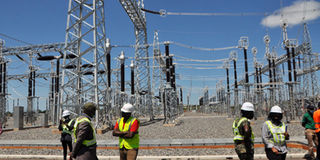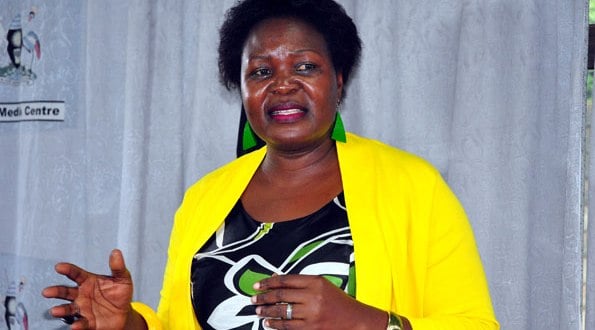How much electricity does Uganda really have?

An electricity substation. The World Bank has questioned the government move to bundle and nationalise Uganda Electricity Generation Company (UEGCL), Uganda Electricity Transmission Company (UETCL), and Uganda Electricity Distribution Company (UEDCL). PHOTOS / FILE
What you need to know:
- During plenary, a section of agitated MPs tasked Ms Nankabirwa to justify the enormous investments, mostly concessional loans in the electricity apparatus, including generation but the country now has to import 60 megawatts from neigbouring Kenya to plug the gap occasioned by the Isimba dam shutdown.
Energy minister Ruth Nankabirwa yesterday found a hard time explaining claims that the country has surplus electricity and yet ever hanging by a thread during emergencies.
During plenary, a section of agitated MPs tasked Ms Nankabirwa to justify the enormous investments, mostly concessional loans in the electricity apparatus, including generation but the country now has to import 60 megawatts from neigbouring Kenya to plug the gap occasioned by the Isimba dam shutdown.
The Bugabula South MP, Mr Henry Kibalya, pointed to a possible collusion inside the Uganda Electricity Generation Company Ltd (UEGCL), the managers of both the stricken 183.2 megawatts Isimba dam and the Heavy Fuel/ Namanve thermal power plant, previously operated by Jacobsen Elktro AS Norwa under a 13-year build, operate and transfer arrangement until early this year when it reverted to government.
UEGCL is the statutory body in charge of the country’s electricity generation.
“Hon minister, please pick interest. After the shutdown of Isimba you will see the cost of thermal,” Mr Kibalya said amid cheers by colleagues.
During inspection of the plant in May, months after it had reverted to government, UEGCL officials put the cost of running the plant at $2.7m (Shs9.99b), reportedly comparatively cheaper compared to Jacobsen.
The plant tariff as approved by the power regulator, Electricity Regulatory Authority (ERA), $5cents per megawatts per house for variables while fixed costs are $6.24 cents per megawatt-hour from the further-year to the twentieth year of the generation licence operated by UEGCL.
Power from the Heavy Fuel Oil/thermal plants has for long been costly compared to the alternatives such as hydro.
As of June, Uganda had a combined generation capacity of 1,365.7 megawatts from all sources against average peak demand of 800 megawatts.
However, with the subtraction of Isimba’s 183.2 megawatts questions linger on where the surplus is.
Yesterday, Ms Nankabirwa allayed fears of an increase in tariff as a result of the emergency.
“This incident is not going to be felt in the end-user tariff now. We always rebase the tariff[s] in January and if at all anything we have been trying to bring it down,” she said.
Several MPs, however, remained dissatisfied with the clumsy state of affairs of the country’s energy sector.
For instance, construction of the 600megawatts Karuma dam at the parallels of Kiryandongo and Oyam districts has been ongoing for a decade now, and beset by a number of challenges, including claims of shoddy works blamed on the poor quality of sand, while related aspects like substations and transmission lines in different parts of the country to evacuate power from the dam, are far from completion.
Following the shutdown of Isimba, Cabinet on Monday gave nod to reverse purchase of 60megawatts from Kenya, activation of 50megawatts from the Namanve plant, and another 20megawatts from Bagasse/ sugarcane pulp from Kakira Sugar Works.
Despite claims by officials in the Ministry of Energy and President Museveni that Uganda has surplus electricity, there is grumbling across the country about the cost and stability of power connection.
Uganda has an average end-user tariff of around $0.17 per kilowatt per hour, which is higher than both Tanzania and Ethiopia.




